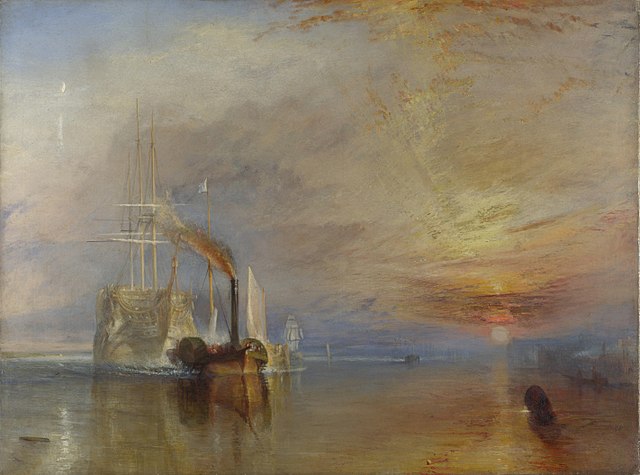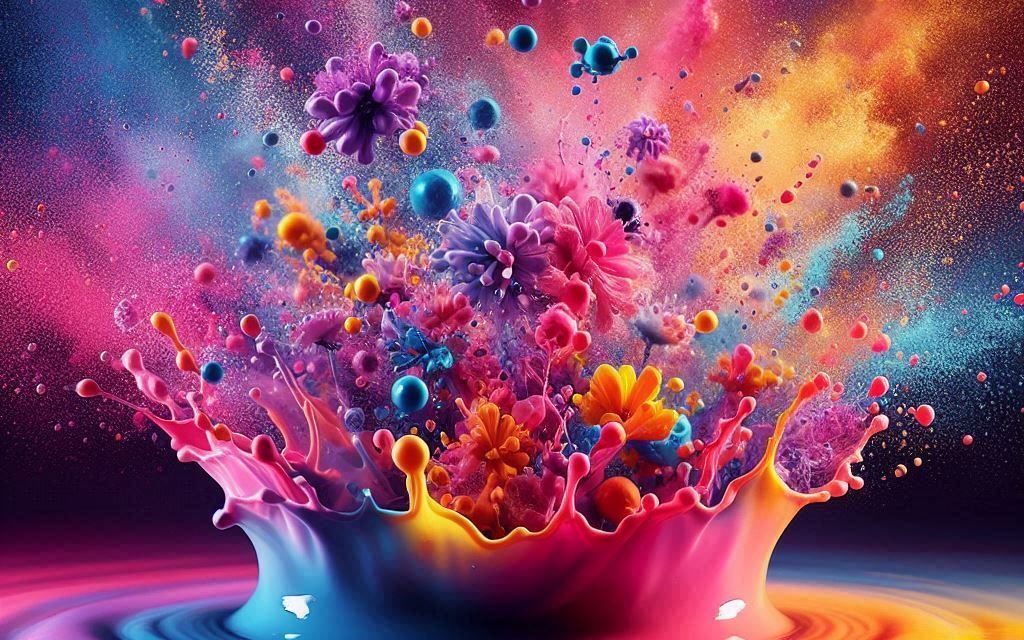Table of Contents
The Visual Techniques for Drawing Water: A Detailed Examination
Drawing water, a fundamental element in nature, has fascinated artists for centuries. Its ever-changing appearance, ranging from the stillness of a lake to the turbulence of a stormy sea, makes it a challenging subject to capture in visual art. The challenge arises from water’s fluidity, transparency, and reflectiveness, all of which defy the static nature of drawing. Nonetheless, through various techniques and practices, artists have developed methods to depict water realistically or stylistically, with effects that evoke its essence and movement. This essay explores the fundamental visual techniques used to draw water, examining approaches to still water, flowing water, and rough water, as well as highlighting key considerations for reflection, transparency, and color.

Photo by J. M. W. Turner – National Gallery of Art, Public Domain, Wikimedia Commons
1. Understanding the Nature of Water
Before delving into techniques, it is crucial to understand the essential properties of water in artistic terms. Water’s unique properties—its reflectiveness, transparency, and fluidity—mean it rarely has a distinct shape. Instead, it adopts the shape of its environment, whether it be a glass of water, a stream, or the ocean. In visual representation, this means artists must think beyond traditional solid forms and focus on the interaction between water and light, as well as its surrounding environment.
Water’s interaction with light is of primary importance. Its surface reflects the environment, light changes its color depending on depth, and objects beneath the water appear distorted. These factors influence how water is depicted, requiring special attention to detail when using line, shading, and color.
2. Basic Techniques for Drawing Still Water
Still water, such as lakes or calm seas, often presents a mirror-like surface, reflecting the sky and nearby objects. This reflection must be handled carefully to create a convincing depiction. The primary techniques include:
- Reflections and Symmetry: In still water, reflections are often symmetrical to the objects above the surface. For example, trees reflected in a lake mirror their shapes almost identically, though the reflected image may appear slightly distorted or blurred, especially in rippling water. Using horizontal strokes, artists can indicate the surface of the water, while the reflection can be rendered in softer or slightly jagged lines.
- Gradation and Subtle Shading: Still water requires subtle shading to convey depth and light diffusion. Areas closer to the horizon or the viewer may appear darker due to light absorption. Artists often use gradual transitions between light and dark areas to suggest the water’s surface, using soft blending techniques or light hatching for pencil drawings.
- Surface Texture: Even in still water, tiny ripples or waves create texture. These can be depicted with slight horizontal strokes, often using lighter values against the darker water surface to create contrast.
3. Depicting Flowing Water: Streams, Rivers, and Waterfalls
Flowing water poses a unique challenge due to its constant movement. The key to depicting flowing water lies in capturing the sense of motion and the way light interacts with the moving surface.
- Lines and Direction: Flowing water, such as streams or rivers, is often represented by fluid, continuous lines that follow the direction of the water’s current. These lines should vary in width and intensity to reflect the varying speeds of the water. For fast-moving water, such as waterfalls, the lines can be more dynamic and curved to show splashes and drops.
- Layering and Overlapping Forms: Flowing water often creates overlapping layers, especially in waterfalls or rapids, where waves or splashes cascade over each other. Artists can use overlapping strokes and shading to represent these layers. The use of white space or very light shading can emphasize the highlights and foam, giving the impression of the water’s speed and turbulence.
- Reflections and Distortion: As water moves, it distorts the reflection of objects. Artists can capture this by using wavy, broken lines to suggest reflections in moving water. Blurring the edges of reflections can further emphasize the movement, as can alternating between sharp and soft contrasts.
4. Drawing Rough and Turbulent Water
In rough water conditions, such as stormy seas, the goal is to capture the chaos and unpredictability of the water’s motion. This requires a different approach, focusing on sharp contrasts, dynamic lines, and exaggerated movement.
- Strong Contrasts: Rough water is often depicted using strong contrasts between light and dark areas. White foam or spray contrasts sharply with the darker depths of the water. Artists can use intense highlights, created with white or light colors, to indicate the churning waves and splashes.
- Sharp, Angular Lines: Unlike the smooth lines of still or flowing water, rough water often contains sharp, jagged lines to represent the waves crashing against each other. These lines should follow an irregular, chaotic pattern, with sharp changes in direction to convey the energy of the water.
- Foam and Spray: Foam is a key characteristic of rough water. Using stippling, light hatching, or even leaving areas of white paper untouched, artists can create the appearance of foam. In watercolor or paint, this effect is often achieved by flicking white paint over dark areas or using dry brushing to create a rough texture.
5. Considerations for Reflection and Transparency
Water’s reflectiveness and transparency are complex to represent but are vital in giving water its distinct characteristics in a drawing.
- Reflecting Surroundings: Reflections should mirror the surroundings but with slight distortions depending on the water’s movement. Still water reflects more clearly, while moving water breaks up reflections into abstract patterns. When drawing reflections, it is essential to observe the colors and tones carefully; reflections are often darker than the object itself.
- Transparency and Objects Below the Surface: When water is shallow or clear, objects beneath the surface become visible. However, these objects will appear slightly distorted, and their colors muted. Artists must consider the refractive quality of water, drawing submerged objects as if viewed through a lens, often using blurred or warped lines.
- Depth and Light: Water’s depth affects its color and transparency. Shallow water tends to be lighter and clearer, revealing objects beneath the surface. As water deepens, its color darkens, and transparency diminishes. Gradual shading and variations in color are essential to convey this sense of depth, with blues, greens, and grays used in combination to depict water in different lighting conditions.
6. Color in Drawing Water
While much of traditional drawing focuses on line and shading, color plays a significant role in creating a convincing depiction of water. Even in monochromatic drawings, the value contrasts and gradations help convey water’s essence.
- Blues, Greens, and Grays: Water in different environments takes on various colors, often ranging from deep blues and greens in oceans to grays in stormy conditions. In shallow water, lighter, more transparent blues or greens may be used to indicate clarity, while deeper water requires darker tones. In stormy or rough water, grays and blacks dominate the palette.
- Reflected Light: The color of water is not static—it changes according to the light, sky, and surrounding landscape. Artists often use complementary colors to capture the interplay of light and reflection. For instance, in sunset scenes, orange or pink highlights may appear on the surface of the water.
7. Mastering the Depiction of Water
Drawing water is an intricate task, requiring a blend of observation, technique, and creativity. Whether an artist aims to capture the calm serenity of a lake, the dynamic flow of a river, or the chaos of stormy seas, understanding how water interacts with light, its surroundings, and its own movement is essential. Mastering techniques such as reflection, transparency, and texture allows for the effective representation of water in various forms. Ultimately, the key to successfully drawing water lies in the artist’s ability to convey both its physical properties and its emotional resonance, invoking a sense of nature’s complexity and beauty.


No responses yet